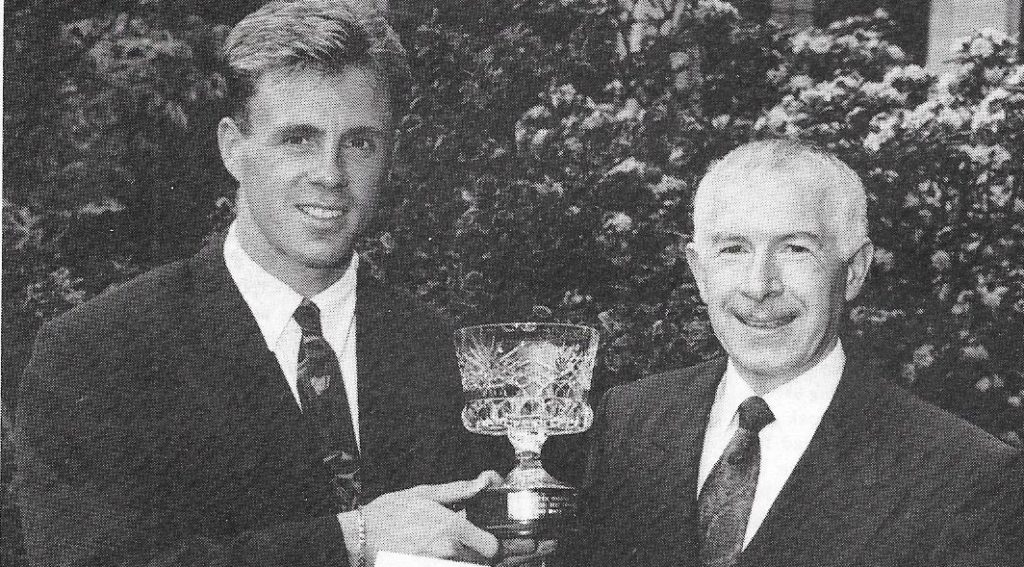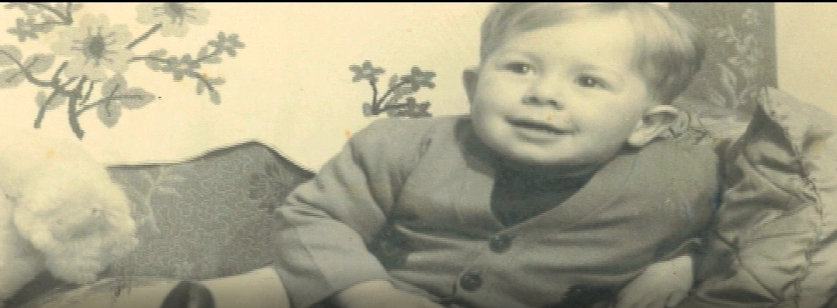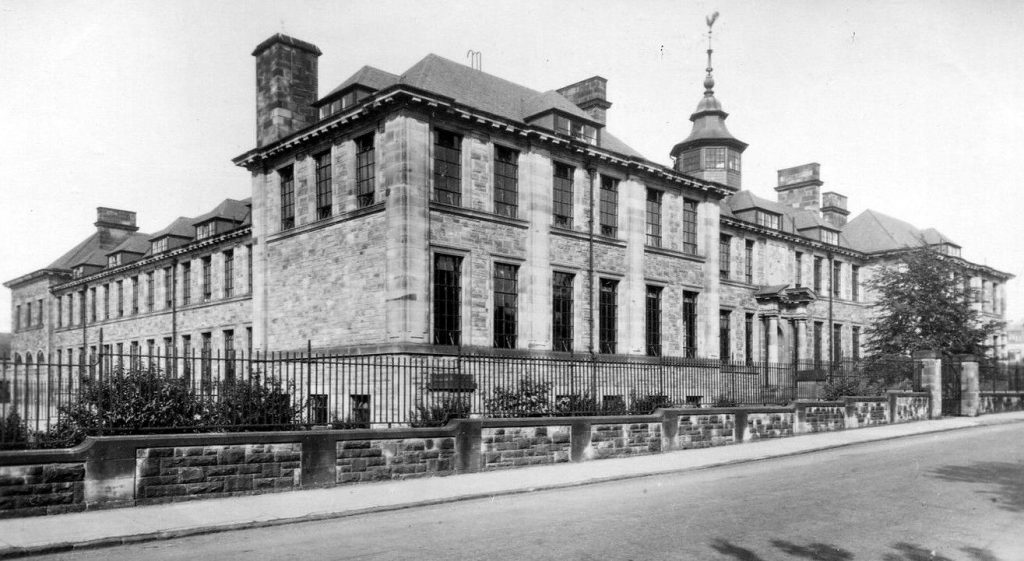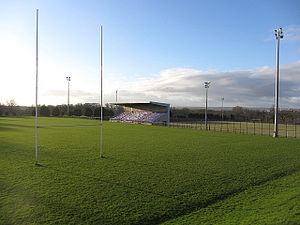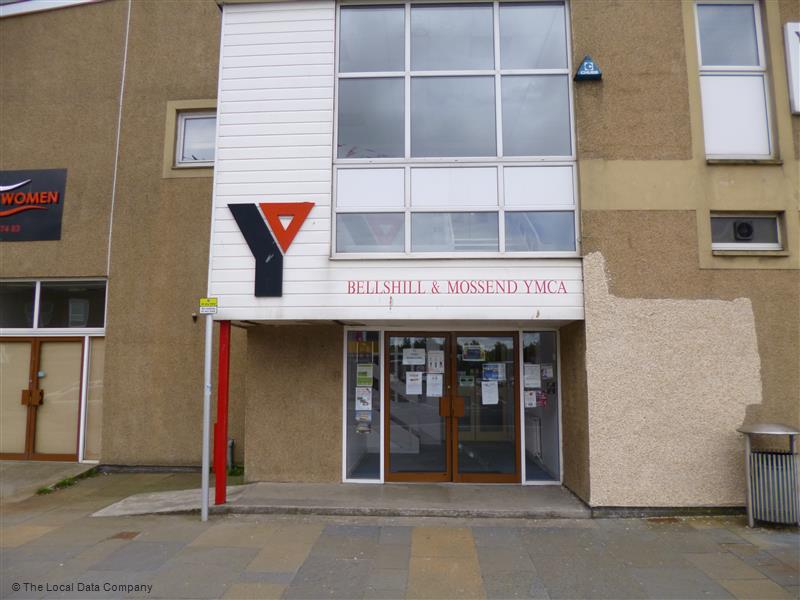Tommy Boyle is a quite remarkable athletics coach with a rather different background to most international coaches. It is a much richer background in the range of experiences that have contributed to his outlook on life in general and sport in particular: it was certainly not the straightforward progression of many of his peers. For that reason his early background has to be looked at perhaps more closely than usual.
Family history of running is limited to his grandfather running for Motherwell YMCA as a boy, but there was no athletic role model in his immediate family. Tommy’s family home was on the edge of village, of Newarthill in Lanarkshire. Living in the country he, like all the other youngsters around, did loads of exercise – bird watching, ferreting rabbits , and so on – and spent most of his time in the open air active in one way or another. It was all fun to him! Newarthill is about three miles from Motherwell, and it’s a bit ironic that Wikipedia comments that Newarthill does not have any leisure facility of note. Tommy as the eldest son in a family of eleven. ran and/or cycled around 10 miles a day doing a paper round to bring in some added money. This was not unique to him, as he points out, many good endurance athletes in that era did paper or milk rounds. His early athletics career involved winning some money each year at local gala day sports – a big event in the community!
Master Thomas Boyle
There is often some key figure or figures in the development of a sportsman and Tommy encountered several people who helped him on his way. Encouraged by his Boys Brigade Captain, Jim Sherwood, to start a Cross Country team, Tommy says of the resulting team, “we developed a great team spirit and they all worked very hard, we did a session on Sunday after bible class and morning service , the caretaker allowed us into the church hall free and I introduced them to a five mile run, we ran 2.5 miles out into country on ash path and ran back It was a handicapped run and the winner got into bath tub first ,it was tough and I learned the physical and mental advantages of handicapping.” It would be interesting to know why Jim Sherwood encouraged Tommy in particular to form the team and not any of the other boys. How did his career develop from there?
Well, he won the series of three races as an individual, and the team won the battalion Cross Country Trophy. The winner of the races before Tommy was John Graham who went on to great things as a marathon runner. As a result he was invited to go along to Motherwell YMCA by Bobby Craigen, which was full of very good athletes many of whom ran for Scotland: in included runners like the Brown brothers, Bert McKay, Ian McCafferty and a many famous names. That first training night was very intimidating so he did not go back. However, he was also invited to join Bellshill YMCA Harriers, the club with which he was always associated, by Johnny Waddell who was the captain in Bellshill Battalion and secretary of the Bellshill YMCA Harriers,which he had resurrected after many years .
Always one to go that wee bit further, he spoke to his Dad, whom he calls “my greatest inspiration in life” and he told him to go and speak to Bob Henshaw a train driver from Newarthill ,who was steeped in the Pro Athletics Culture. Tommy says “as it transpired, he held a youth sport class at the Bellshill Academy, where Bellshill YMCA harriers and football teams trained, so I went along and joined up and really learned so much from Bob. He was a gentleman and although his expertise was in sprints, he introduced me to the concept of Circuit training he had a holistic approach to developing young athletes, Physically, Psychologically and Socially – (later to learn these were the pillars of MASTERY Coaching )”
He was a pupil at Dalziel High School (above), class of ’61 his Facebook page tells us, which he says “was a fantastic School and way ahead of its time. High academic achieving but more important led by a visionary head teacher in Jimmy Scobbie – who developed a fantastic School Culture which encouraged every pupil to participate in school activities even if they were not good at that activity.” The school was founded in 1902, James Scobbie was head from 1952 to 1974 and is reported to have greatly enhanced the school’s performances and reputation. This progress continues to this day – in 2008 it was voted the best school in Scotland. Tommy describes the head of PE as a legend of his time. Jimmy Hogg was an ex professional footballer who also had a holistic approach to sport. The school has its own playing fields at Cleland which are used by several local sports clubs and in the 1960’s they were used for District and Inter-District cross-country races. Every year a group of pupils went up to there to participate in sport for one afternoon a week, for 12 weeks of the academic year. Everybody did everything, there were no superstars. The pupils learned so much doing orienteering, rugby, football, hockey, athletics. Tommy again: “However, what he was really developing was character; reinforcing that “winning was success through sustained effort” and that you get out of life what you put in . The Lanarkshire Schools cross country was held at Cleland estate each year and Jimmy would get the farmer to plough one of the fields at 90 degrees to the direction of running to make it tougher but safe . He was the guy who ignited the spark which lit the flame of athletics in me,he truly inspired many generations of pupils to “become the very best they could be in sport and life” and many thousands of pupils did including one Tommy Boyle.”
Tommy frequently talks of learning Life Lessons and says “One of my great Life Lessons was after winning the school mile, a handicap where girls went off first, then at intervals each year group of boys followed. I was in second year and to the surprise of everyone this wee guy from nowhere won the big competition at the school sports. Next morning I was asked to go along to the head’s office. I thought for a big well done, however Jimmy Scobbie said “Well-done Mr Boyle. However, you did not wear the school uniform.” I was taught yet another big lesson which I remembered for the rest of my life .
He left School at age 15 as the family needed the money. This was when he moved from the family home to live in a caravan which was to the rear of his Dad’s house. Tommy says “My grandfather Alex was a retired miner who had raced pigeons and greyhounds and at night he did a bit of poaching which filled the family pot. The years spent living with him were massive in my learning: indeed he had a quiet way of educating me on what he had learned from life and, I guess, knocked me into shape through these restless teenage years. Indeed, he was a giant among men”
Tommy went on to serve his apprenticeship at Colville’s training centre at Mossend which he regards as a wonderful foundation for the rest of his life in manufacturing. Little did Tommy know that these years were to inform and shape his career to such a degree that he would eventually become Manufacturing Director in Packard Bell, employing over 500 staff producing 5000 pcs a day. Tommy says that it was these wise inspirational training instructors who taught a bunch of rebellious teenagers loads of life lessons as well as the technical information. We began to learn about business processes, the seeds of which grew in my head to shape my coaching and business careers.
He was a member of Bellshill YMCA Harriers from age 14 through until age 20. He says that he had a wee bit of potential, “however I only trained three times a week, doing a run and circuits Tuesday and Thursday with either a run or competition on the Saturdays. It should be pointed out that this was the normal pattern for almost all young runners in the country: two club nights plus Saturday at the club whether racing or not. They were great times, load s of fun – great banter with the YMCA football guys and learning from Bob as he groomed his pro sprinters for Powderhall
“I really enjoyed those years at Bellshill YMCA and was constantly encouraged by the then president Jimmy Love yet another visionary who was also the world YMCA president, we grew the harriers club and had a great deal of success in the younger age groups.
“I remember a few highlights of competition,
- Winning the Lanarkshire Track 800 and being selected to compete in the inter-counties; Tom Paterson Shettleston was also in that team
- Finishing third in the Scottish YMCA Cross Country and being selected to run for the Scottish YMCA in Belfast ,I remember the team playing cards to the wee small hours on the ferry over;
- Getting advice from Andy Brown about how to pace myself , did not run well that day , I think it was all too much for me and only training three times a week was catching up .Jim McKechnie was in the team ;
- Good memories of medals at Lanarkshire and Scottish YMCA Comps at youth age groups ,
- I remember running the National CC at Hamilton race course, hundreds of runners – grass was long we turned at the bottom of the hill and I looked up to the finish about one mile up the hill looked like goal posts. Tom Paterson and Martin McMahon passed me like whippets , I think Eddie Knox won that one, but I realised then training three times a week would not cut it !”
When he was 18 he had to work shifts, training became even more difficult and he only did the circuit sessions and road runs to keep fit.
Away from athletics for a moment, reaching the final year of his apprenticeship he was advised by one of the great tradesmen that heavy engineering was dying and it would be best to change my career pathway to Electronics. He advised that the best way was to join the navy, earn some money see the world and they would teach him electrical side of engineering. So he left athletics, joined Shell and went out to the gulf on his first ship. It was a massive experience. Tommy lost a stone in weight, saw bit of the world and returned at age 21. He joined Honeywell Computers starting on the shop floor as an inspector – the first stepping stone on a journey to the top in a very successful career in computing.
At that point he visited Bellshill YMCA to see the guys and when leaving was trapped by Jimmy Love “who proceeded to lecture me on how the YMCA had taught me so many life lessons and set me on a solid pathway, he also highlighted that I had a great deal to offer if I took up coaching ,he immediately said the YMCA would pay all my coach education expenses if I volunteered one night a week (that was a wee bit stretching what he really had in mind )and he proceeded to get me enrolled at Largs in assistant club course the next month and so the next stage of my journey in athletics started .”
It was, then, no coincidence that Bellshill YMCA suddenly appeared on cross-country fixture lists in the 1960’s – no doubt due to the efforts of the gentlemen that Tommy has mentioned above. The SCCU District Relays were held there for four successive years between 1968 and 1971 inclusive, although the actual championships were never held at Bellshill . District relays and championships were also held at Cleland, as were the inter-counties championships. The venue was a new one to most runners but they soon discovered that the mud was real mud, and that there were real fences on what were politely referred to as traditional trails.
Tommy is quite clear about the debt he owes to all the people who helped develop his character and shape his attitudes: Jim Sherwood, Bob Henshaw, James Scobbie, Jimmy Hogg, John Waddell, Jimmy Love – his grandfather Alex a font of wisdom and his greatest inspiration in life, his Dad. But they probably all spotted something in as well: why did Jim Sherwood pick Tommy to organise the cross-country squad? Why did Jimmy Love home in on Tommy to get into coaching in the first place? Did they see leadership potential? Did they see organisational ability? Regardless, he was now on the coaching ladder while holding down a day job.
Part Two: Tommy Boyle as a Coach in Bellshill Part Three: Tommy Boyle: Master Coach Part Four: Tommy Boyle: Lifecoach
